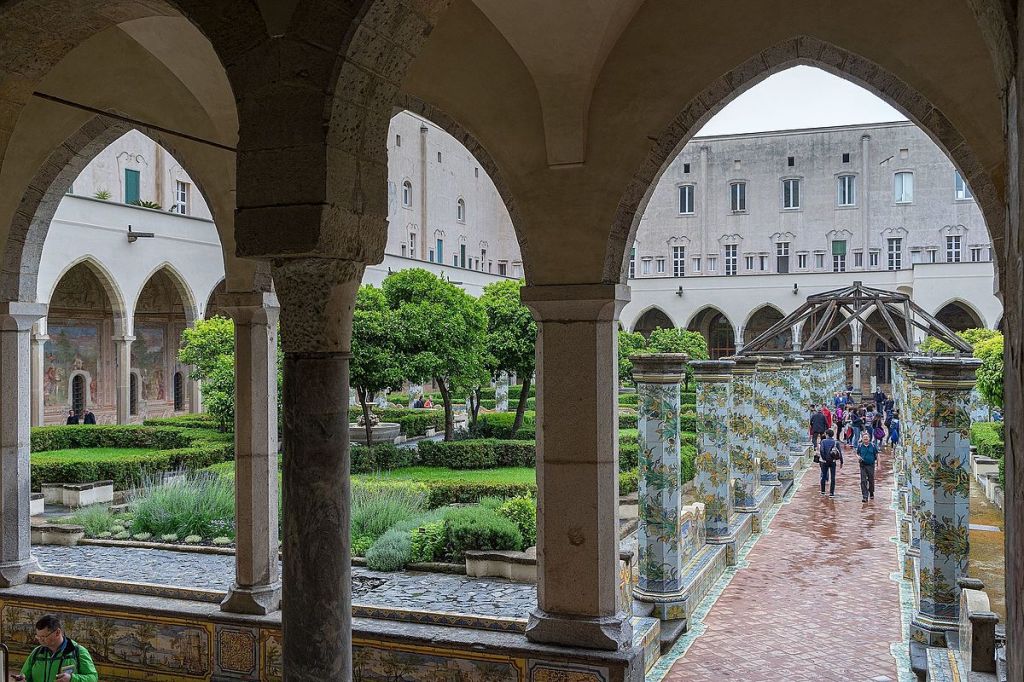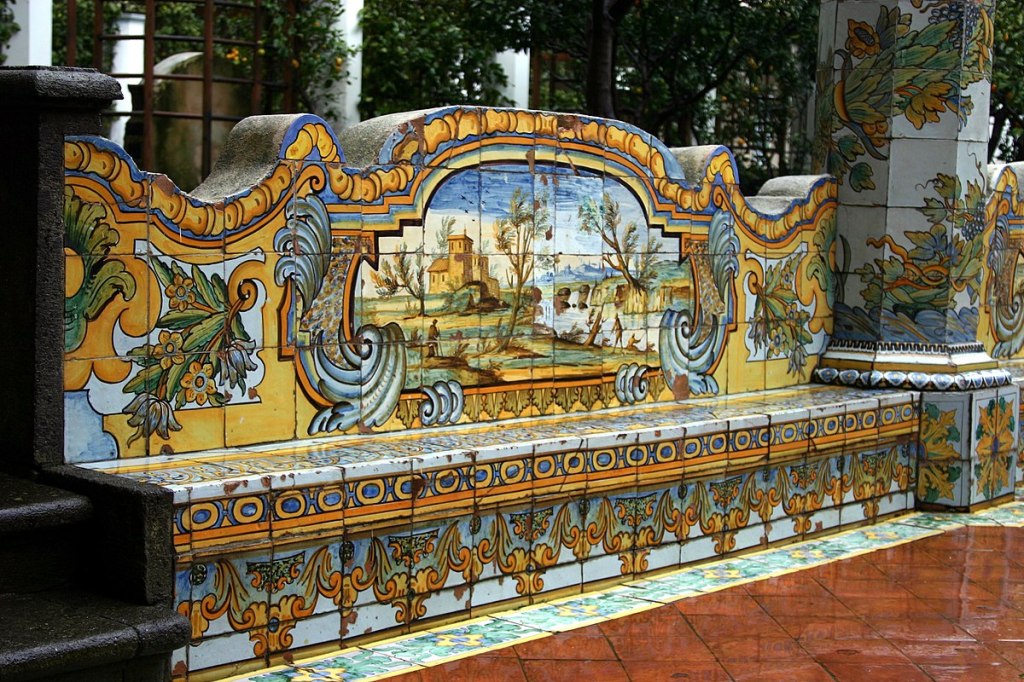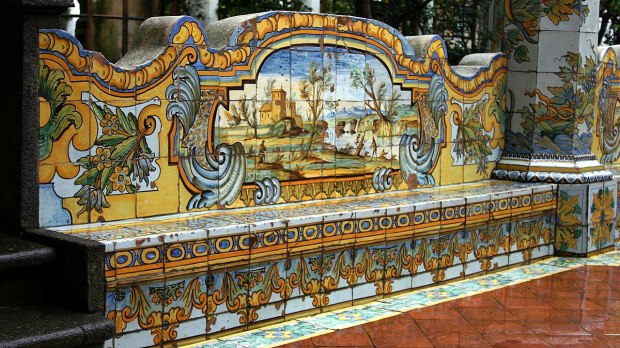Catholic travelers visiting Naples, Italy, have usually hit world famous sights like the Veiled Christ, a 1753 marble sculpture by Giuseppe Sanmartino or the Duomo di Santa Maria Assunta, the city’s Cathedral, known for housing the remains of St. Januarius. But in recent years, thanks to social media, a lesser known Catholic site has become increasingly popular with visitors to the southern Italian city.
Nestled in the narrow cobble street of Naples historic city center, the 14th-century Convent of Saint Clare is one of the most photographed sights in Naples due to the unique decorations of its cloister. The internal courtyards contain lines of citrus trees and a series of octagonal pillars decorated with bright fruit motifs like lemons, oranges and vines. The benches are decorated with beautiful majolica, a type of hand painted ceramic tiles, depicting scenes of daily Neapolitan life.
The result is an enchanted garden where the colors typical of the Mediterranean palette, such as yellow, orange and blue, glimmer in the Neapolitan sun.
But many eager Instagrammers might miss the story behind these colorful decorations.
The Cloister of St. Clare was built in 1310 as part of a Franciscan citadel ordered by King Robert of Anjou and his wife Sancha of Majorca. The citadel was made of two convents, one for Franciscan Friars and one for Poor Clares — the Convent of St. Clare.
The complex was built according to Gothic design with simple facades and rose windows. Then, in 1739, Abbess Ippolita Carmignani commissioned landscape architect Domenico Antonio Vaccaro with the creation of an internal garden for the Poor Clares. The idea was to create a garden that would suit the aesthetic needs of “noble ladies.”

Vaccaro, known as an innovative and talented architect, created a garden that could align with the simple geometry of the Gothic building while celebrating the colors and vibrancy of Naples. He picked fruit motifs for the octagonal columns in order to reflect the colors of Mediterranean gardens. And for the bench tiles, he selected images of daily Neapolitan life that cloistered nuns were not able to witness first hand.
As explained in Italy Magazine, these scenes ranged from fishing boats returning to Naples after going out at sea, to boar hunting scenes or the iconic local dance, the tarantella. These scenes were a way to “connect” the nuns with the life that was taking place outside of their beautiful convent.

For centuries, the beautiful garden of the Convent of St. Clare was only known to the nuns, as access to the cloister was strictly restricted. Rumors about its unique design spread around Naples and fueled a growing sense of curiosity in the general public. But it wasn’t until the 1970s that lay people were finally allowed to access the famous garden.
Today, the Convent is open to the public every day from 9 a.m. to 1 p.m. and from 2:30 p.m. to 5:30 p.m. Tickets can be booked online here.




